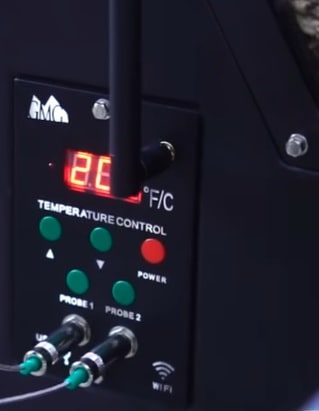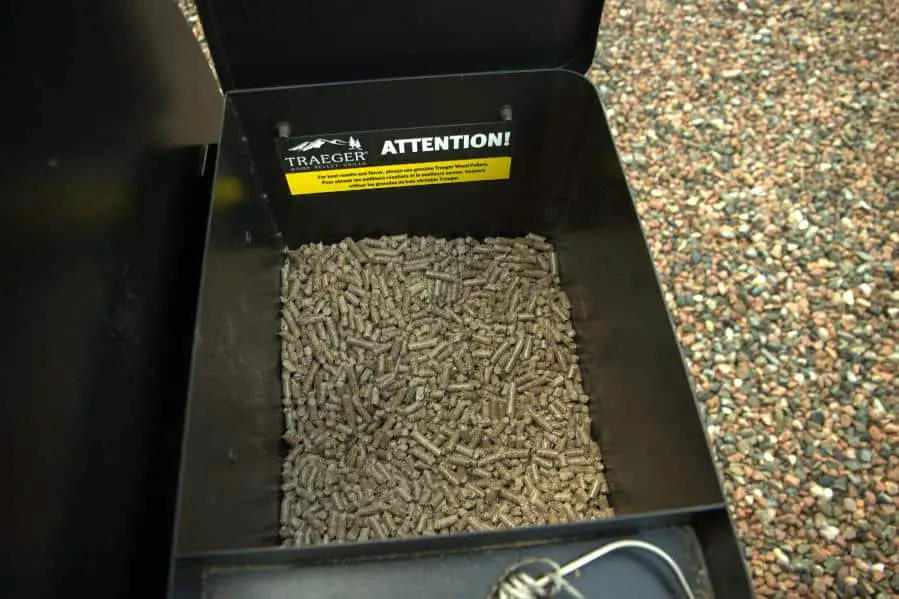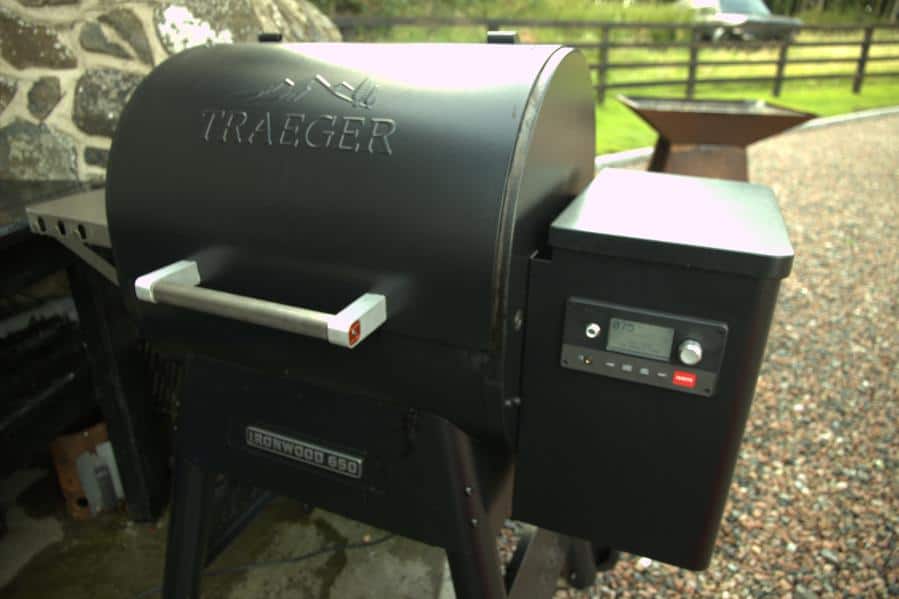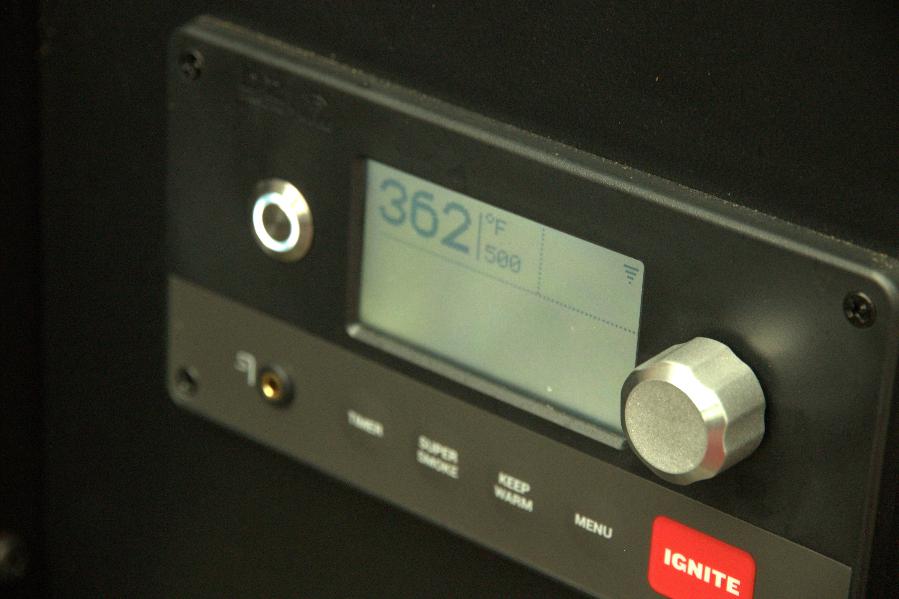
This post will go into quite a bit of detail about how a pellet grill works, it’s nice at complicated as people think. It’s quite similar to an oven, with some smoke added of course.
I also want to highlight how a pellet grill to some other smoking and grilling options in terms of performance and convenience, I have discovered pellet grills quite the game-changer.
Now I’m not just a pellet grill smoker guy, I use a charcoal, gas BBQ grill, portable and kamado toys, I mean tools. I have toyed around with indirect low & slow a fair bit with pellet tube smokers and a smoke generator to produced barbeque quite a few different ways.
I love smoking BBQ meats, curing my own bacon, cold smoke meat and most of all sharing what I have learned over the years.
From seeing up close the competitive BBQ competitions, BBQ festivals and spending way too long in any BBQ shop. I sponge up all the info and just love hearing about new techniques and recipes. It’s a passion of mine (hence why I started this site).
So here is a simple answer about how these pellet grills work, then I will get into a bit more depth about what they’re all about.
How Does a Pellet Grill Work? From a hopper, wood pellets are fed through an automatic auger screw, a heat rod ignites the pellets in a fire pot which produces heat and smoke. A thermostat controller provides feedback so the temperature is kept consistent. The pellet grill can be set to smoking or grilling temperatures.
You can see how this is quite a bit like an oven, but you really can’t smoke meat in an oven without causing a minor hazard or setting off all your smoke alarms. And most guys I know don’t really want to stick an oven on the porch or deck.
Convenience is probably the keyword I think of when it comes to a pellet grill. But why are pellet grills convenient vs. other options?
Let me deep dive a bit into why I choose a pellet grill over just another traditional smoker upgrade.
Flavor, it’s also a very important factor because at the end of the day that’s what this whole task is about. And the pellet grill basically just keeps producing quality smoke all the way through the cook, due to clean combustion.
I still find it funny when I hear good old-fashioned charcoal smoker offset stick burner guys, say that a pellet grill can’t produce a smoke ring. More often then not they haven’t even seen a pellet grill going.
The science behind the smoke ring isn’t that complicated either, and yes, a pellet grill can create one. I can get a smoke ring every time I put a piece of meat on the pellet grill. For that matter, even sausages can get a smoke ring from any smoker.
cold meat + low temperature + wood smoke = smoke ring
It’s simply just low heat and a chemical reaction from the wood-burning at the start of the cooking session.
There are a few other tips, that will help with smoke rings – I got into some detail in this post if you’re interested.
Parts of a Pellet Grill & How they Work

Here is a quick overview of the main electric bit without getting into every nut and bolt.
It’s a oven, heated by wood pellets automatically fed into a firepot. Producing heat and smoke, the thermostat controlled computer then provides feedback on temperature so the fans and auger screw feed can be adjusted accordingly.
Main Components of a Pellet Grill

So that’s a pretty basic idea of 1 fan system. But also you get 2 fans with one applying the positive pressure through the auger and the second one is controlling the firepot burning side of things, like the below.

- Hopper
- Auger & Motor
- Fans
- Thermostat Controller
- RTD / Temperature Sensor
- Temperature Probes
Hopper
Since the official patent invention of the pellet grill, they work on the same system and process (with some upgrades of course to the tech), all the brands nowadays basically kicked off after the Traeger patent ended In 2006.
The hopper does vary in size and so do the auger screws and motors.
But all in all the reputable brands of pellet grills do a decent job of producing great quality low and slow-smoked meats. By controlling the temperature and producing a cleaning smoke around the meat indirectly.
The quality of the wood pellet used and as long as the pellets have been stored well will definitely also influence the type of outcome you get from a pellet grill. I have gone through the learning curve, and it doesn’t take much really to look after wood pellets, just keep them dry (like I haven’t sometimes).
There are subtle differences in design when it comes to where a temperature sensor is placed inside the pellet grill. Though as long as it’s around the grill or a bit above, I have seen proper smoked BBQ be produced regardless – remember low & slow smoking is definitely not about the need of precision instruments in my opinion.
I remember when I first started using kettle grill charcoal snake methods for doing charcoal wood smoking sessions, I sometimes had variations of up to 50 to 70°F during the cook – still turned out awesome. Just gotta hit those internal meat temperatures.
And guess what, after eight hours of around that 200 to 250°F temperature I still had some incredibly happy guests devouring my ribs.
Because of the competitiveness in the barbecue arenas (and commercialization), people are always comparing this type of smoker to that type smoker and what is considered is the “best“. But as long as you eventually end up hitting those internal temperatures and most the time the pellet grill has a built-in temperature probe or two, then you will get quality barbecue smoked meats as the outcomes
Pellet Grill Features I find Useful
- Shelves
- Temperature Probes
- Wifi
- Alarms
Shelves are very useful on any type of grill or smoker, most the time you’ll get shelves on one side maybe both sides. Sometimes you can get pellet grills with a front shelf some people like some people don’t like.
I spent a long time putting together a comparison tool between pellet grill smokers I and willing to recommend, and rather than just focusing on some of the pure specifications I used a ranking system to really highlight what factors could be important for what people are after, and which pellet grills excel at some of those factors. If you want to have a look at the comparison tool table, it’s over on this page.
Most the time you have certain alarms which are definitely useful like if the wood pellets are low in the hopper or temperature alarms whether these are set automatically not they are very useful. It’s these types of features when compared to those other types of smokers, that add up to the overall convenience factor when it comes to pellet grill in my eyes.
What Makes a Pellet Grill Convenient Vs Other Smokers

- Grease Bucket & Chute
- Auto Fuel Feeding System
- Auto Thermostat Control
- Low & Slow Smoking or Grilling
- No Messy Fuels (ie. Charocal)
I had to think long and hard about this part since these are innovations and features that have made pellet grills so popular on the market and some of these are the main reasons why I love pellet grills now.
Grease Bucket & Chute
So basically you have an angled sloped tray underneath the grill so all you’re greasy fatty goodness dribbles down and goes down a chute. How it works is, your bucket gets grease and goop, hopefully, the bucket is lined, you just empty the grease bucket which is hanging on the side of the pellet grill.
I like to empty the grease bucket after each cook. and then it’s ready to go next time. You do have a bit of simple maintenance with pellet grills like any gear, there is a little bit you should be doing after each cook and then some other stuff at the end or the start of the summer season generally. I’ve got into what I’ve learned through a few mistakes and my maintenance routine, in this post here.
Auto Fuel Feeding System
The hopper whether it’s 10 pounds of 40 pounds will just keep on feeding the auger, which then just screws into the firepot. Some pellet grills have a door on the back so that you can easily empty out the pellets, but mine doesn’t.
In terms of consumption as a general guide for low & slow smoking every 10 pounds of pellets, I get about roughly 10 hours of smoking. Which equals approximately 1 pound or half kilogram per hour. At around $1 a 1lb it suits me fine.
When grilling it seems to hit about 2-3 pounds per hour.
There is a fan operating down the bottom of the hopper which provides positive pressure to the fire pot burning area, this basically means that the fire and combustion stay in the firepot & chamber.
Auto Thermostat Control

Automatic thermostat control is basically the center core reason why pellet grills are so convenient. They will keep the temperature around what you need and provide ‘clean-burning thin blue smoke‘ which is combusted the way you want the wood smoked
A lot of people don’t know that it’s actually the smoke vapor, not the smoke that provides the flavor.
This is also why people talk about the transparent ‘thin blue smoke’, but it also depends on what type of wood you are using. There are some types of hardwood I have used that actually burns transparent be yellow.
Low & Slow Smoking or Grilling
Low & slow smoking is primarily what these pellet grill were designed for and doing it on autopilot with no mess. But it can also be a decent woodfired direct heat grill if you know how to capture the heat being produced.
There is one key that you need for it to be an effective grilling machine and searer, a form of heat retention. Whether you replace the grill plates or you put it on top of the grill this is really what’s needed so that the heat produced from the pellets can be held, to get that sizzle really going on those steaks.
No Messy Fuels (ie. Charocal)
I’ve used a fair few chunks of charcoal briquettes and lump charcoal, even if I used tongs or gloves it always ends up getting a bit messy. I actually like bit of a mess sometimes but not with charcoal.
But when you contrast this with using a pellet grill, you realize how clean your cooking environment is, it really does make it easier especially if you’re on a patio in an apartment (my brother has a charcoal smoker on the patio).
The only thing with pellet wood for smoking fuel is that you’ve got keep it dry. Basically those little wooden pellets are just heated up and the natural resin helps bind the wood pellets under pressure so they stick. Once cooled down and then, boom you have wood pellets.
The same way they make wood pellets for heating, however heating wood pellets have additives and generally aren’t pure deciduous hardwood like peach, apple, hickory or oak. So you only want to use smoking BBQ wood pellets, big bags are available every now. I get them from my local hunting shop.
Another one of those lessons I learned was, you think that closing a pellet bag would be the best thing to keep the moisture out, but it’s not, because some of the natural moisture inside the pellet may end up trapped and condensation can occur. I just store pellets in a giant bucket in the garage. And to try and use them within six months/summer/spring ideally up to a year.
Quick History of Pellet Grills
So, back in the day, the only brand that was out there before 2006 was Traeger, Traeger got their idea from pellet stove heating systems or otherwise known as biomass in the modern renewable energy age. I’m not sure whether it’s the reason why I’m quite interested in pellet grill smokers, but I did some biomass work in Europe which was quite fascinating since it was an efficient replacement for many oil-burning options in the commercial sector.
And to make a long story short, the inventor of the Traeger sold the business around about the end of the patent. And then a whole bunch of new companies started up in 2007 – 2008. And last time I counted I think it was over 30 brands around for pellet grills (although quite a few of them are not worth your while).
In barbecue smoking competitions certain states actually don’t allow pellet grills to compete and some of them do.
My guess is it’s because of the traditional purist approach which means you have to use charcoal or wood. Even though the pellet grill is pure wood, and the funniest thing is a pellet grill smoked barbecue competitors have actually won a fair few competitions they were allowed to compete in.
What is the Max Temperature of a Pellet Grill

I did a full post on this because it needed some explaining of how you can get the most of the pellet grill (like with heat retention). If you invest you can get to 700°F, but we are talking a decent investment, but you don’t need to if the goal is for pizza or a reverse sear brontosaurus or tomahawk style steak.
You just need to retain the heat that’s been generated, so even the pellet grills that go to 400°F can still make a very effective searing machine.
If you want a useful comparison table and more information on getting a crusty pizza or see it steak, here is a link to my post on pellet grill maximum temperatures.
Fuel Efficiency of a Pellet Grill
Based on the what ash is left over after a cooking session, I would say the pellet grill is very efficient. When I compare this to charcoal or wood that is.
If you missed it above, the average for low temperature 200-250°F is:
1 pound of pellets= one hour of cooking
Different Types of Pellet Grill Controllers
The controller is really the brains that run everything, the fans in the auger screw and the ignition – the whole kit and caboodle.
What I have seen is that regardless of whether the temperature is kept within 5°F or whether it swings around 20 or 40°F it really doesn’t matter too much with the outcomes, it all averages out. It’s about hitting internal meat temperatures do break down muscle and render fat.
However, there are some different designs when it comes to how a controller works and how it does the feedback temperature information and adjustments.
PID vs Non-PID Controllers
I got into a fair bit of detail on a post about whether it was worth having a PID controller in a pellet grill or not, since it was something that I was looking at myself.
A PID controller is a real-time learning system which makes the adjustments to provide a more consistent temperature over the course of the cooking session.
Compared to a timed duty cycle controller which is probably the first technology that came out 30 odd years ago, now they can do just as good a job, in terms of barbecue smoking. However, they will overshoot a little bit just due to the design. When it’s on an upward heating cycle it will keep getting hotter until it hits the desired temperature and then click off vice versa when it’s decreasing the temperature.
As you can see it will vary it a little bit more. One interesting question in the BBQ community that been around for a while is. Because this style is cycling more does that mean it’s producing more smoke flavor?. It’s a bit of a pickle, but I haven’t seen any evidence or results to prove that it does or doesn’t.
If you want more smoke flavor from a pellet grill I think the two main ways are.
- Use stronger flavored hardwood pellets like hickory or mesquite.
- Use a second smoke-producing device like a pellet tube or smoke generator.
If you want a bit more information on PID controllers the post I was talking about you can find it here.
Operating a Pellet Grill Smoker
When it comes to the basic operation of a pellet grill. Personally I just like to look over all the main things like whether it’s clean enough for another cooking session the grease chute should be pretty clean normally.
Then you push the start button, choose your temperature, give it 5 to 15 minutes depending on what temperature you’re trying to reach.
Sprinkle on some rub, throwing your meat on and your low & slow smoking.
Get your feet up and relax the hard work has been done.
With the whole Wi-Fi side of things, you can really keep an eye on what’s going on and it will turn off once that desired internal temperature has been reached (think this is standard now on most decent pellet grills).
How Much Maintenance for a Pellet Grill?
Is about five minutes of cleaning you should do after each cook.
Then I like to have a bit of a routine after each bag pellets so 20-pound bag of pellets about 20 hours of cooking.
Then at the end of summer the pellet grill gets some proper TLC and a cleanup ready for the next season. I have been known to pull out the pellet grill in winter anyway and have a good old smoke up. Pellet grills can get up to temperature in most places, although in some parts a heat blanket can be used.
If you want more on maintenance then you can check out a post to read on it here.
Pellet Grill – Mods & Options
DIY Options
Just using decent heat retention brick building can be used, for making a little pizza oven, a little bit DIY can work very effectively.
Useful Accessories
For some brands, you can get things like a slide in a mini pizza oven which does a great job of retaining and holding the heat, it looks nice too. It will crank the heat from all sides to produce proper Naples thin crust pizza.
Grill grates are another one which is pretty much a necessity when it comes to a pellet grill. Although for many years I just used a decent cast-iron pan both methods are about holding the heat for effective searing of steaks, patties or whatever grilling you love doing.

